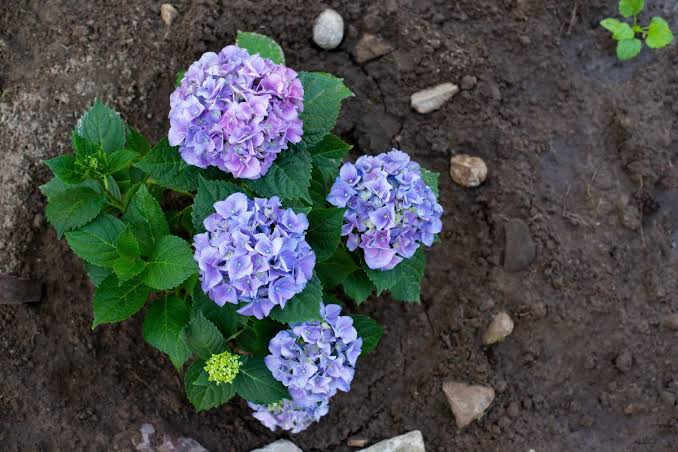Few plants bring as much instant charm and elegance to a garden as hydrangeas. Known for their large, globe-like clusters of flowers in shades of blue, pink, white, and purple, hydrangeas have the power to transform any outdoor space into a lush, inviting retreat. Whether you’re in the United States, the United Kingdom, or Canada, these versatile shrubs are well-loved for their beauty, adaptability, and relatively easy care.If you’ve ever admired a neighbor’s blooming hedge or dreamed of brightening your yard with statement-making flowers, now is the perfect time to learn how to plant hydrangea in ground. With a little preparation and a few smart tips, you can enjoy season after season of breathtaking blooms.Why Plant Hydrangeas in the Ground?Hydrangeas grow well in pots, but planting them directly in the ground offers several benefits:Stronger root systems – Gives plants better access to water and nutrients.Bigger blooms – In-ground hydrangeas often produce larger, fuller flowers.Longer lifespan – With the right care, they can thrive for decades.Landscape appeal – They create natural borders, hedges, or focal points in gardens.Simply put, planting hydrangeas in the ground is an investment in beauty and long-term garden design.Choosing the Right Hydrangea VarietyBefore you plant, consider which type of hydrangea suits your garden:Bigleaf Hydrangea (Hydrangea macrophylla): Famous for color-changing blooms—blue in acidic soil and pink in alkaline soil.Panicle Hydrangea (Hydrangea paniculata): Hardy and sun-tolerant with cone-shaped flowers.Smooth Hydrangea (Hydrangea arborescens): Produces large white blooms, ideal for cold climates.Oakleaf Hydrangea (Hydrangea quercifolia): Distinctive foliage and strong autumn colors.👉 Tip: Check your USDA or RHS hardiness zone before choosing a variety to ensure year-round success.Best Time to Plant HydrangeasTiming is key for healthy growth. The best times to plant are:Spring – After the last frost when the soil is warming.Fall – Before the ground freezes, giving roots time to establish.Avoid planting in the peak of summer heat, as it can stress young plants.Step-by-Step Guide: How to Plant Hydrangea in GroundStep 1: Choose the LocationHydrangeas prefer:Morning sun, afternoon shade (especially in hotter regions).Well-draining soil to prevent root rot.Sheltered spots away from harsh winds.Step 2: Prepare the SoilTest your soil’s pH if you want specific bloom colors.Acidic (pH 5.0–5.5) → blue flowers.Alkaline (pH 6.0–6.5) → pink flowers.Enrich with compost or organic matter for nutrients.Step 3: Dig the HoleDig a hole twice as wide as the root ball and about as deep.Loosen soil at the bottom to encourage root spread.Step 4: Plant the HydrangeaPlace the plant in the hole so the top of the root ball is level with the ground.Backfill with soil, pressing gently to remove air pockets.Water thoroughly to help the roots settle.Step 5: Mulch & ProtectAdd 2–3 inches of mulch around the base to retain moisture and regulate soil temperature.Keep mulch a few inches away from the stem to prevent rot.Caring for Newly Planted HydrangeasWatering: Hydrangeas love moisture but not soggy soil. Water deeply 2–3 times a week during the first growing season.Fertilizing: Use a balanced, slow-release fertilizer in spring and mid-summer.Pruning: Depends on the variety. Bigleaf hydrangeas bloom on old wood, while panicle types bloom on new wood.Protection: In colder climates, cover with burlap or mulch in winter to protect roots.How Hydrangeas Transform Your SpacePlanting hydrangeas in the ground can completely change the look and feel of your garden:Create stunning borders with vibrant, full hedges.Add seasonal interest—blooms in summer, foliage in fall.Enhance curb appeal with show-stopping front yard plantings.Attract pollinators like bees and butterflies.Provide long-lasting cut flowers for indoor arrangements.Whether you’re designing a cozy cottage garden or a modern outdoor retreat, hydrangeas bring life, color, and elegance to any landscape.Practical Tips for SuccessAvoid overwatering – Check soil moisture before adding more water.Deadhead spent blooms – Encourages new growth and tidier plants.Space plants properly – Leave at least 3–10 feet between shrubs depending on variety.Watch for pests – Keep an eye out for aphids, spider mites, or powdery mildew.Be patient – Hydrangeas may take a year or two to reach full blooming potential.Fun Ideas for Landscaping with HydrangeasHydrangea hedge: Line your walkway with multiple shrubs for a dramatic entrance.Mixed garden beds: Combine hydrangeas with roses, hostas, or ferns for layered beauty.Accent planting: Use a single hydrangea bush as a focal point in your yard.Cottage garden charm: Pair with lavender, daisies, or foxgloves for a romantic look.ConclusionIf you’ve been looking for a simple yet impactful way to elevate your outdoor space, planting hydrangeas in the ground is the answer. With their lush blooms, vibrant colors, and ability to thrive in many climates, hydrangeas are a true garden showstopper.Now that you know exactly how to plant hydrangea in ground, you can enjoy the transformation firsthand. From boosting curb appeal to creating a personal floral retreat, hydrangeas will bring beauty and joy to your home for years to come.🌸 Try it today—your dream garden is only one hydrangea away!

